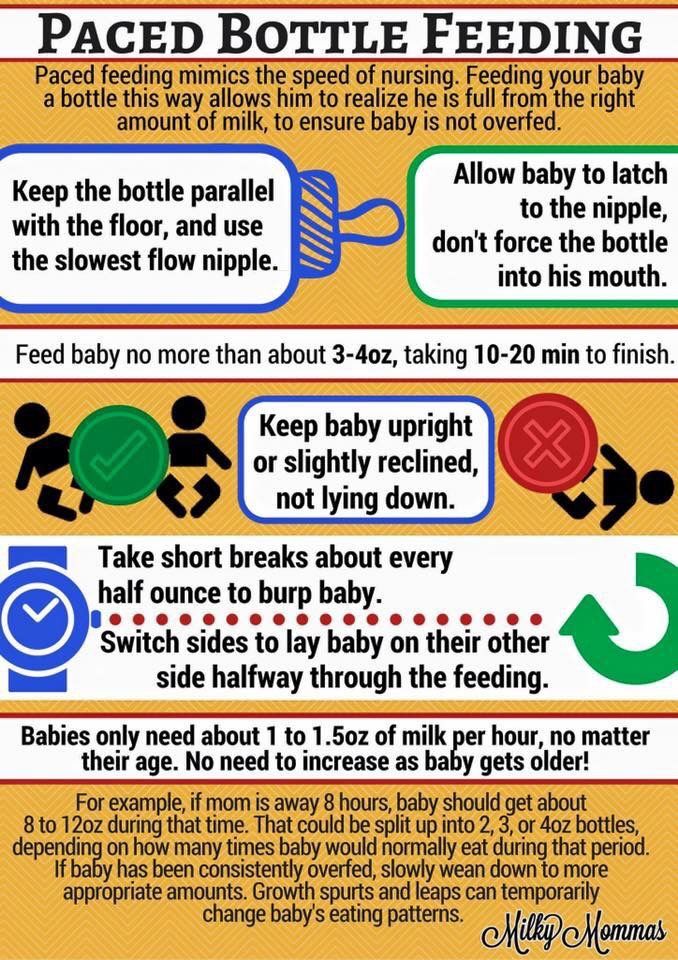Foods for baby to avoid
Foods to avoid giving babies and young children
Salt
Babies should not eat much salt, as it's not good for their kidneys.
Do not add salt to your baby's food or cooking water, and do not use stock cubes or gravy, as they're often high in salt.
Remember this when you're cooking for the family if you plan to give the same food to your baby.
Avoid salty foods like:
- bacon
- sausages
- chips with added salt
- crackers
- crisps
- ready meals
- takeaways
Sugar
Your baby does not need sugar.
By avoiding sugary snacks and drinks (including fruit juice and other fruit drinks), you'll help prevent tooth decay.
Saturated fat
Do not give your child too many foods that are high in saturated fat, such as crisps, biscuits and cakes.
Checking the nutrition labels can help you choose foods that are lower in saturated fat.
See more on food labels.
Honey
Occasionally, honey contains bacteria that can produce toxins in a baby's intestines, leading to infant botulism, which is a very serious illness.
Do not give your child honey until they're over 1 year old. Honey is a sugar, so avoiding it will also help prevent tooth decay.
Whole nuts and peanuts
Whole nuts and peanuts should not be given to children under 5 years old, as they can choke on them.
You can give your baby nuts and peanuts from around 6 months old, as long as they're crushed, ground or a smooth nut or peanut butter.
If there's a history of food allergies or other allergies in your family, talk to your GP or health visitor before introducing nuts and peanuts.
See more on food allergies in babies and young children.
Some cheeses
Cheese can form part of a healthy, balanced diet for babies and young children, and provides calcium, protein and vitamins.
Babies can eat pasteurised full-fat cheese from 6 months old. This includes hard cheeses, such as mild cheddar cheese, cottage cheese and cream cheese.
Babies and young children should not eat mould-ripened soft cheeses, such as brie or camembert, or ripened goats' milk cheese and soft blue-veined cheese, such as roquefort. There's a higher risk that these cheeses might carry a bacteria called listeria.
There's a higher risk that these cheeses might carry a bacteria called listeria.
Many cheeses are made from unpasteurised milk. It's better to avoid these because of the risk of listeria.
You can check labels on cheeses to make sure they're made from pasteurised milk.
But these cheeses can be used as part of a cooked recipe as listeria is killed by cooking. Baked brie, for example, is a safer option.
Raw and lightly cooked eggs
Babies can have eggs from around 6 months.
If the eggs are hens' eggs and they have a red lion stamped on them, or you see a red lion with the words "British Lion Quality" on the box, it's fine for your baby to have them raw (for example, in homemade mayonnaise) or lightly cooked.
Hens' eggs that do not have the red lion mark should be cooked until both the white and yolk are solid. So should duck, goose or quail eggs.
So should duck, goose or quail eggs.
Avoid raw eggs, including uncooked cake mixture, homemade ice creams, homemade mayonnaise, or desserts that contain uncooked egg that you cannot confirm are red lion stamped.
Rice drinks
Children under 5 years old should not have rice drinks as a substitute for breast milk or infant formula (or cows' milk after 1 year old) as they may contain too much arsenic.
Arsenic is found naturally in the environment and can find its way into our food and water.
Rice tends to take up more arsenic than other grains, but this does not mean that you or your baby cannot eat rice.
In the UK, there are maximum levels of inorganic arsenic allowed in rice and rice products, and even stricter levels are set for foods intended for young children.
Do not worry if your child has already had rice drinks. There's no immediate risk to them, but it's best to switch to a different kind of milk.
There's no immediate risk to them, but it's best to switch to a different kind of milk.
Raw jelly cubes
Raw jelly cubes can be a choking hazard for babies and young children.
If you're making jelly from raw jelly cubes, make sure you always follow the manufacturers' instructions.
Raw shellfish
Raw or lightly cooked shellfish, such as mussels, clams and oysters, can increase the risk of food poisoning, so it's best not to give it to babies.
Shark, swordfish and marlin
Do not give your baby shark, swordfish or marlin. The amount of mercury in these fish can affect the development of a baby's nervous system.
Further information
For more information and advice about babies and food, see:
- food allergies in babies and young children
- your baby's first solid foods
- baby and toddler meal ideas
Foods to avoid feeding your baby
Foods to avoid giving your baby include honey, cow's milk, soy milk, fruit juice, sugar-sweetened beverages, unpasteurized foods, and foods with added sugars or too much sodium. Choking hazards are a serious concern, so don't offer large chunks, raw vegetables, nuts and seeds, hard or crunchy foods, sticky foods, or dollops of nut butters. If allergies run in your family or your baby has eczema, check with the doctor about introducing allergenic foods such as egfgs, peanuts, tree nuts, wheat, soy, fish, and shellfish.
Choking hazards are a serious concern, so don't offer large chunks, raw vegetables, nuts and seeds, hard or crunchy foods, sticky foods, or dollops of nut butters. If allergies run in your family or your baby has eczema, check with the doctor about introducing allergenic foods such as egfgs, peanuts, tree nuts, wheat, soy, fish, and shellfish.
As your baby grows, they'll be eager to sample food from your plate – and you'll be eager to introduce some variety. But not all foods are safe for your child.
Foods to avoid: Birth to 6 months
All food and beverages except breast milk or formula: The American Academy of Pediatrics (AAP) recommends feeding your baby only breast milk or formula for about the first 6 months.
Foods to avoid: 6 to 12 months
Honey: Honey can harbor spores of Clostridium botulinum, which causes botulism. An adult's intestinal tract can prevent the growth of these spores, but in a baby the spores can grow and produce life-threatening toxins.
Cow's milk and soy milk: Stick with breast milk or formula until your child's first birthday. Why? Your baby can't digest the proteins in cow's milk and soy milk during the first year, and these beverages contain minerals in amounts that can damage your baby's kidneys.
Fruit juice and sugar-sweetened beverages: Juice (even 100 percent fruit juice) and sugar-sweetened beverages such as soda and sports drinks aren't recommended for children under 12 months. When babies fill up on these drinks, they miss out on getting the nutrients they need. And though fruit juice seems healthy, it has far more calories and sugar than fresh fruit and can contribute to weight gain and tooth decay. The AAP recommends no fruit juice for babies, and just 4 ounces per day maximum for toddlers ages 1 to 3.
Unpasteurized foods: Don't give babies and children unpasteurized juice or cider or unpasteurized (raw) dairy products. These may contain harmful bacteria and parasites that can lead to serious illness or death.
Added sugars: Avoid added sugar in the diets of children under age 2, the U.S. Department of Agriculture and U.S. Department of Health and Human Services advise. These are sugars and syrups that are added to foods or beverages when they are processed or prepared. This doesn't include sugars found in milk and fruits. Too much added sugar in children's diets has been linked to obesity and increased risk for future health problems such as diabetes and heart disease. Check the Nutrition Facts label on packaged foods, and avoid those that list 1 g or more of "Added Sugars."
Too much sodium: Sodium is an essential nutrient primarily consumed as salt. However, too much can be harmful. Children this age don't need more than 1,200 mg of sodium per day, according to the USDA and DHHS. Check the Nutrition Facts label when buying canned, frozen, and packaged foods.
Large chunks: A chunk of food can get stuck in your baby's throat. The AAP recommends that you cut food into pieces no larger than 1/2 inch. For example, cut up fruits such as grapes, cherry tomatoes, and strawberries, and shred or finely chop meats, vegetables, and cheeses.
The AAP recommends that you cut food into pieces no larger than 1/2 inch. For example, cut up fruits such as grapes, cherry tomatoes, and strawberries, and shred or finely chop meats, vegetables, and cheeses.
Advertisement | page continues below
Raw vegetables: Soft-cook vegetables such as carrots, celery, and broccoli, and dice, shred, or cut them into pieces no larger than 1/2 inch before serving.
Nuts and seeds: Remove seeds and pits from fresh fruit such as watermelon, peaches, plums, and cherries before serving. And don't feed your baby nuts or seeds, such as sunflower or pumpkin seeds. Seeds may be too small to choke on but can get stuck in a child's airway and cause an infection.
Hard or crunchy foods: Nuts, popcorn, and pretzels are all choking hazards, as are all hard candies and cough drops.
Sticky foods: Chewing gum and sticky foods – such as jelly or gummy candies, dried fruit, and marshmallows – can get lodged in your baby's throat. Stringy, melted cheese can also be a choking hazard.
Stringy, melted cheese can also be a choking hazard.
Nut butter: The sticky consistency of peanut butter and other nut butters can make it hard for your baby to swallow it. Spread nut butter thinly on bread or crackers. Or thin it with water or applesauce.
Learn more about preventing choking in young children.
Find out about choosing safe finger foods and which foods can be unsafe for toddlers and children up to age 5.
The latest on children and food allergies
Doctors used to recommend waiting until age 1 or even later to introduce solid foods that are common allergens, especially with children at risk for allergies. But the AAP has changed its tune, because studies show that these delays don't help prevent allergies and may even increase the risk of them.
You may be told to introduce foods one at a time, waiting three to five days after each new food to watch for any allergic reaction. Or your doctor may say it's fine to start multiple new foods at once. If you believe your baby is likely to have food allergies – for example, if allergies run in your family or your baby has eczema – check with their doctor to determine the best strategy for introducing allergenic foods, which include eggs, milk, peanuts, wheat, soy, tree nuts, fish, and shellfish.
If you believe your baby is likely to have food allergies – for example, if allergies run in your family or your baby has eczema – check with their doctor to determine the best strategy for introducing allergenic foods, which include eggs, milk, peanuts, wheat, soy, tree nuts, fish, and shellfish.
Read more about food allergies in children.
Was this article helpful?
Yes
No
90,000 what foods children should not eat and how to teach them to eat right? Proper nutrition of children is underestimated by many. After all, our parents, grandparents somehow grew up without this knowledge. But in fact, the older generations, who grew up in conditions of total scarcity, did not have to fight temptations. They just didn't exist. And the products that were available were much more suitable for the definition of proper nutrition than the food that children now eat. And it's not even about fast food, the dangers of which are known to almost everyone. Nutritionists and other children's doctors spoke about what foods children should not eat and how to teach them to eat right in an interview with MIR 24. nine0003
nine0003
“Nutrition is one of the main factors determining the normal development of a child, it has the most direct impact on his growth and health,” says pediatrician, senior medical consultant of Teledoctor 24 Maria Mamedova . - It is most important to observe the principles of rational nutrition in children of early and preschool age. This period is characterized by intensive growth processes, improvement of the functions of many organs and systems, especially the nervous system, enhanced metabolic processes, and the development of motor activity. nine0003
What not to eat for babies and preschool children
Vinogradov pediatrician Vladislav Zyablitsky , in addition to harmful foods for children of all ages, pediatricians emphasize foods that children under 3 years old should not eat. Here they are.
- Seafood such as shrimp, mussels, crabs (allergic).
- Sausages, sausages, sausages (overflowing with flavors, dyes, preservatives).
 nine0022
nine0022 - Lamb, fatty pork, meat of waterfowl (geese and ducks) - contain an excessive amount of refractory fats of animal origin.
- Melon and grapes (increase gas production and increase the load on the pancreas).
- Everyone's favorite delicacy is ice cream (has an increased level of fat content, sugar content, harmful additives that can cause allergies).
- Honey if the child is prone to food allergies.
- "Adult" non-adapted milk (dangerous with allergies, problems with the gastrointestinal tract, decreased immunity of the child's body, metabolic disorders, atherosclerosis and arterial hypertension in the future). nine0022
- Cakes, cakes, sweets, chocolate, puff or shortbread cookies, other confectionery. They are crammed with food additives, sugar, fat, but contain almost no nutrients.
- Cocoa - due to the high fat content of the drink and the invigorating alkaloid theobromine.
- Do not give tomatoes until 1 year of age (they overload the kidneys).

- Only after 1.5 years is it permissible to give the child garlic, onions, bell peppers in small amounts.
- Pickled cucumbers and pickled tomatoes should not be given until 2 years of age (due to bacteria). nine0022
- Nuts, especially peanuts (very strong allergens).
- Celery (excessively activates the activity of the pancreas).
- Red and black caviar is forbidden up to 5 years (very allergenic, includes preservatives; contains excess salt, which is fraught with kidneys). For the same reason, salted fish is prohibited.
- Mushrooms - the child's body does not contain enough enzymes to digest them. In addition, mushrooms accumulate radioactive substances and heavy metals.
Strictly not recommended for all children, regardless of age: salty crackers, chips, french fries, hamburgers and other fast food.
“The best way to avoid a child's love for such food is not to go to places where it is sold.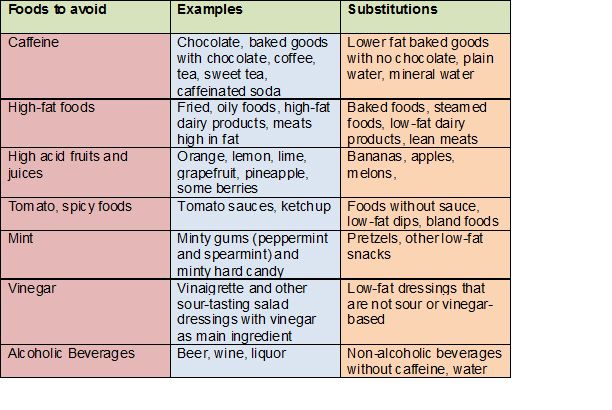 Confidently walk past the bright signs of fast food restaurants, ignore the aroma of pies in a kiosk near the subway, forget about noodles and instant soups. After all, this food is a direct path to obesity, diabetes, to malfunctions of the immune and cardiovascular systems,” says Maria Mammadova. The pediatrician adds a few more to the list of products prohibited for preschoolers. nine0003
Confidently walk past the bright signs of fast food restaurants, ignore the aroma of pies in a kiosk near the subway, forget about noodles and instant soups. After all, this food is a direct path to obesity, diabetes, to malfunctions of the immune and cardiovascular systems,” says Maria Mammadova. The pediatrician adds a few more to the list of products prohibited for preschoolers. nine0003
- Semi-finished products . It is fast, convenient, but not useful for children whose gastrointestinal tract is imperfect - the processes of digestion, the production of enzymes and bile in preschool children are still immature. The nutritional value of semi-finished products is a dubious question, and one can only guess about the qualitative composition of their components. For the production of semi-finished products, vegetable proteins are often used, which are inferior to meat and fish in terms of amino acid composition. Excess salt in ready-made semi-finished products creates an unnecessary burden on the child's kidneys, food additives provoke allergies, spices irritate the gastrointestinal mucosa, starch and soy are poorly digested, causing functional disorders of the digestive system.
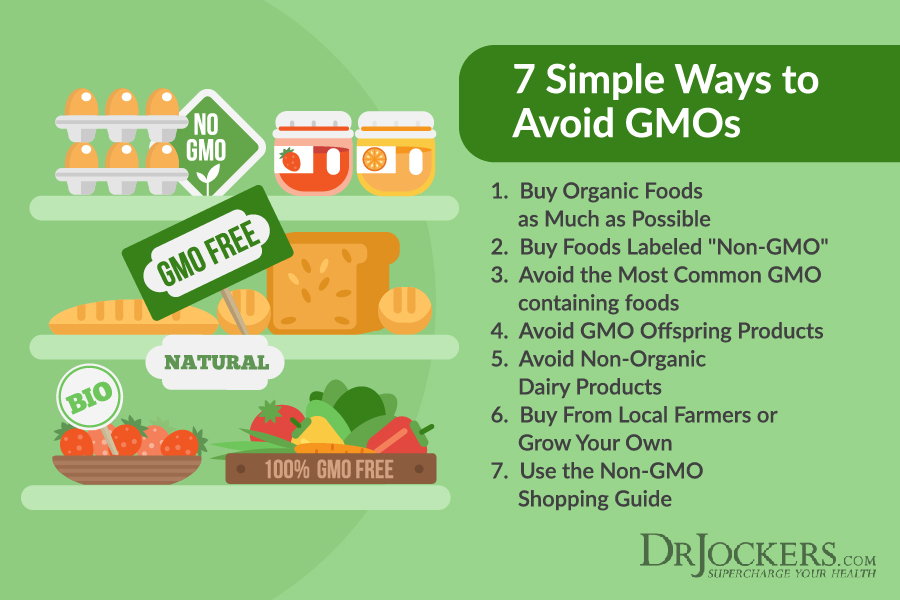 nine0022
nine0022 - Minced meat for children's food is best prepared by yourself, as the store-bought often contains a lot of fat, connective tissue, and bird skin. The same applies to minced fish: it is prepared from low-value fish varieties, and only a production specialist can control the quality of the product.
- Sausages . Some parents sometimes replace a full-fledged meat or fish dish on the children's table with sausages - for the same reasons of saving time. The cost of a kilogram of the most optimal quality sausages is almost equal to the price of meat (veal, beef, pork), and sometimes even higher. But this does not mean at all that meat of a certain category is present in the composition of the product in the amount stipulated by the regulations. According to GOST, premium sausages consist of beef, pork, powdered milk or cream and eggs. If the product is of a lower grade, then it contains up to 10% trimmed meat, starch and a protein stabilizer. However, on the shelves of shops there are mainly sausages made according to specifications - according to the standards created by the manufacturing enterprise itself.
 That is why the composition of the product changes and becomes “richer”: various fillers (cheese, paprika), soy, sodium nitrite (color stabilizer) and monosodium glutamate (flavor enhancer), ascorbic and citric acid, as well as salt and spices are added to it. All these components, depending on the concentration in the product, adversely affect the health of the child. nine0022
That is why the composition of the product changes and becomes “richer”: various fillers (cheese, paprika), soy, sodium nitrite (color stabilizer) and monosodium glutamate (flavor enhancer), ascorbic and citric acid, as well as salt and spices are added to it. All these components, depending on the concentration in the product, adversely affect the health of the child. nine0022 - Smoked meat and fish products today are often produced not by the traditional method of smoking, which is also not very useful, but with the use of a special (and very harmful to the human body) substance that gives the product the necessary taste, smell and color.
- Carbonated soft drinks . This is a fully synthetic product. And even a certain percentage of natural juice in the composition of some "soda" is not able to compensate for the harm that artificial dyes, preservatives, flavors, sweeteners and carbon dioxide cause to a fragile body. They not only affect the gastrointestinal tract of the child, spoil the tooth enamel, but can also provoke a lot of serious diseases.
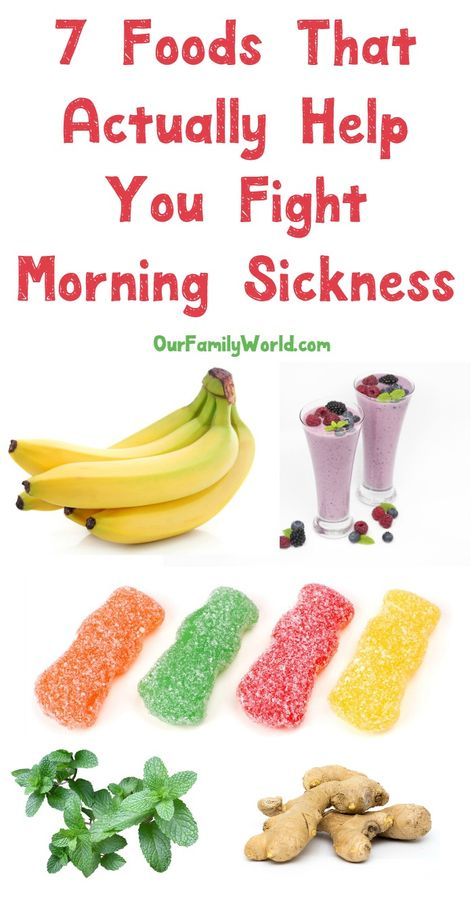 The best drink for a child is water (clean drinking, from two years old - non-carbonated, but not medicinal), freshly squeezed juice diluted with water, fruit or dried fruit compote, berry juice. nine0022
The best drink for a child is water (clean drinking, from two years old - non-carbonated, but not medicinal), freshly squeezed juice diluted with water, fruit or dried fruit compote, berry juice. nine0022 - Vegetables and fruits "out of the can" . There are very few vitamins in products of enhanced heat treatment and long shelf life. Canned vegetables contain a lot of salt and vinegar, fruits - a lot of sugar. And if this is not home preservation, then also synthetic preservatives. Children should be introduced to such products no earlier than seven years. It is better to freeze vegetables, fruits and berries in summer and autumn in order to cook delicious vegetable stews, casseroles, berry fruit drinks and fruit desserts in winter. Or buy ready-made frozen products, remembering that the shock freezing method is the most gentle. nine0022
- Mayonnaise and ketchup . Homemade mayonnaise, a product with a high fat content, can be given to a child only after three years, in small quantities and not systematically.
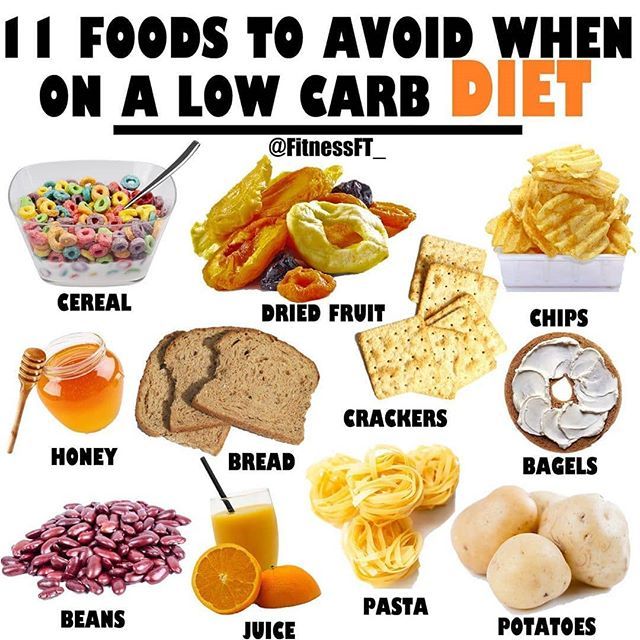 From ready-made mayonnaise, which contains flavors, flavors, dyes, thickeners, stabilizers, emulsifiers and preservatives, it is better to refuse altogether. Ketchup also does not apply to baby food. There are a minimum of vitamins and nutrients in it, hot spices will harm the children's body, and they are produced using all the same preservatives and synthetic additives (to improve color, taste, aroma). nine0022
From ready-made mayonnaise, which contains flavors, flavors, dyes, thickeners, stabilizers, emulsifiers and preservatives, it is better to refuse altogether. Ketchup also does not apply to baby food. There are a minimum of vitamins and nutrients in it, hot spices will harm the children's body, and they are produced using all the same preservatives and synthetic additives (to improve color, taste, aroma). nine0022
You can, but be careful: from sweets to spices
This group includes products that children, according to Maria Mamedova, can use under certain conditions, although they can only be introduced from the age of three and they should not be present in the diet constantly.
Sweets . Experts believe that chocolate is contraindicated for children under three years old. It creates an extra load on the pancreas, causes allergies, excites the nervous system of the crumbs, and can provoke caries. An alternative to chocolate are sweets made from carob, a sweet powder made from the pulp of carob.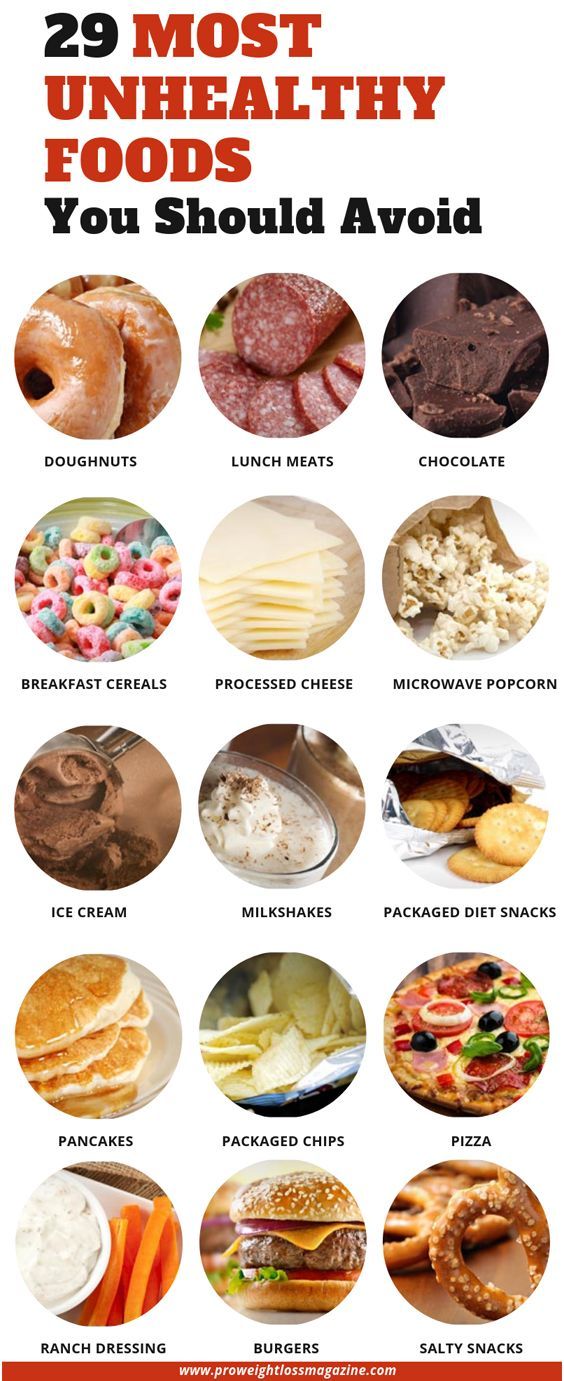 It tastes like cocoa, is very healthy and, unlike chocolate, has no "side effects". nine0003
It tastes like cocoa, is very healthy and, unlike chocolate, has no "side effects". nine0003
The later the child gets acquainted with sweets, the better. But since everything sweet is a source of easily digestible carbohydrates that the body needs, as a dessert, you can occasionally offer your child a little marshmallow, marshmallow, marmalade, jam (while remembering the dangers of synthetic dyes and flavors). It is even better to replace store-bought sweets with berries and fruits, honey (if there is no allergy), dried fruits, sweets and homemade jam.
Flour products . Their regular use provokes excess weight. You can sometimes allow your child to eat a bun or a pie (for an afternoon snack), but it is better to limit yourself to biscuit cookies or drying. Products made from puff, shortbread, pastry, which include margarine, should be completely abandoned - its components increase the level of cholesterol in the blood and provoke the development of vascular diseases in the future.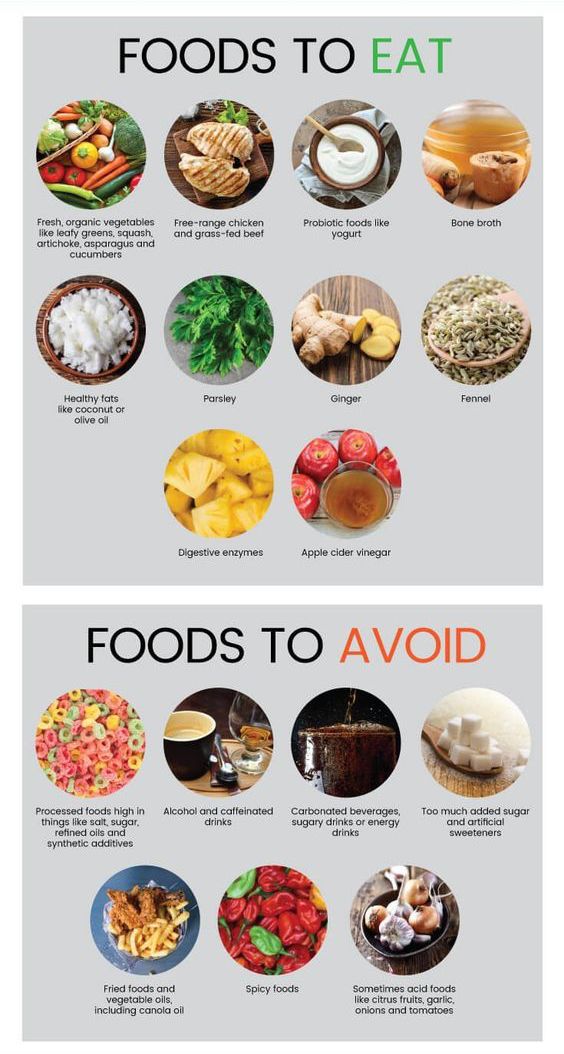
Herbs and spices . They make the taste and aroma of food richer, but seasonings for children's food must be selected very carefully. After a year, greens (dill, parsley, cilantro) can be added to the child’s food, from 1.5-2 years old - onions, garlic (in hot dishes), from 3 years old - bay leaf. Spices used in adult dishes can irritate a child's esophageal mucosa or provoke allergies. nine0003
Ready mixes of spices, various flavoring seasonings should not be added to food for a child, because in addition to the main components, they contain a lot of salt and various preservatives.
Instant porridges . It is very convenient to use them - you do not need to wash the cereal, wait until it is cooked. It is enough just to pour boiling water over a portioned bag, in which everything is already included - sugar, fruit or chocolate, cream or milk. And also - flavors, flavor enhancers and other synthetic additives. The nutrients and vitamins that whole grains contain are lost during the numerous processing steps. Therefore, the use of such porridge in baby food is justified only in emergency cases. For example, on the road - it's still better than eating sausage or fast food. nine0003
Therefore, the use of such porridge in baby food is justified only in emergency cases. For example, on the road - it's still better than eating sausage or fast food. nine0003
How to teach a child to eat healthy food?
“First of all, by example,” says Maria Mamedova. - If the house does not eat junk food, then the child will daily want what he is used to from an early age. Scientists say that even during pregnancy and breastfeeding, the future mother's cravings for certain foods are passed on to the child.
It is important to prepare the right snacks in advance so that children between meals do not grab cookies or candy from the table, but fruit or granulated bran. Delicious and healthy at the same time. nine0003
If there is soda or sweet store-bought juice in the refrigerator, you can give a 100% guarantee that the child will drink it first of all, and not the vital clean water. Therefore, the water filter should be in the most visible place so that it constantly catches the eye.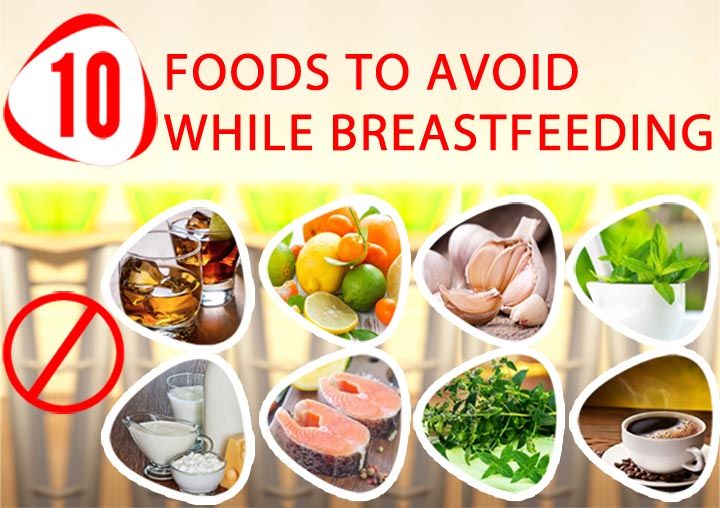
“Watch what your child eats and praise the correct choice. Focus on those products, the consumption of which leads to health, beauty and excellent sports achievements: depending on what he is passionate about,” says Maria Mammadova. nine0003
Most unhealthy foods can be replaced with healthy ones. Potato and corn chips will replace dried fruit slices. Instead of candy, you can eat dried fruits and dried berries. It is important not to confuse with candied fruits, in which there is no less sugar than in candies.
Eating regularly reduces the number of snacks, which means better control of what children eat. If breakfasts, lunches and dinners are held at a common table with adults, then the opportunities to intercept a couple of sweets instead of soup are significantly reduced. But healthy snacks are also not harmful, this is the key to the good functioning of the digestive system. Make them accessible and child-friendly. What can be used if there is no time to cook? nine0003
- Cut carrots, sweet peppers, cucumbers into containers.

- Popcorn free of artificial additives and saturated fat is a great whole grain snack.
- Pour fruit and vegetable smoothies into small bottles.
- Place the bowl of fruit in the most visible place.
Let the children participate in the menu design, so they become more interested in the result. It's always nice to get exactly what you ordered, what you like, for dinner. Do not force yourself to eat unloved foods, no matter how useful they may be. You can always find an equally useful replacement. And pay attention to the fact that healthy products are of high quality. nine0003
Reduce the amount of simple sugars in your diet. To do this, it is not at all necessary to put the child on a diet - just look at the label of those products that you buy out of habit, not paying attention to the composition.
- Replace your traditional loaf with whole grain bread.
- Instead of sweet yoghurt, choose natural yoghurt with a fat content of no more than 1-3%.

- Make homemade cookies instead of store bought.
- The best replacements for store-bought drinks are water and fruits or fruit and vegetable smoothies. nine0022
- Try to avoid trans fats. They are most commonly found in processed foods, fast food, fried foods, frozen pizzas, pies, cookies, margarines, and sandwich mixes.
- If fried foods are a big part of your diet, try gradually switching to stews, steamed or baked foods.
It is important to maintain a pleasant atmosphere while eating. It is better to postpone the showdown and "debriefing" for another time. TVs and tablets should also be turned off. When a person is busy watching a cartoon or TV show, his brain does not think about food, which adversely affects digestion and leads to obesity. nine0003
“By the way, the correct process of eating can be learned from babies,” says Maria Mamedova. “They only eat when they are hungry, they chew their food thoroughly, giving it all their attention.
And they stop eating as soon as they are full. At the same time, children under three years old cannot be forced to eat foods that they do not like. And they choose, as a rule, exactly those that the body needs at the moment.
Schoolchildren and adolescents: six elements of their healthy diet
In school-age children, the need for basic nutrients and energy remains high and is due to physiological and biochemical characteristics: accelerated growth and development, differentiation of various organs and systems, especially the central nervous system, and the intensity of metabolic processes.
“It is important to follow a differentiated approach to determining nutritional needs depending on the type of student's activity,” says Maria Mamedova. - So, for schoolchildren studying in specialized schools with increased mental and physical stress (mathematical, with the study of foreign languages, sports schools, etc.), the total calorie content of the diet should be increased by 10% of the age norm. During the child's stay in health-improving institutions (holiday camps, forest schools, etc.) due to increased energy consumption (intensive physical education, swimming, hiking, etc.), it is also advisable to increase the calorie content of the diet by 10% with a uniform increase in all nutrients and preservation a balanced diet." nine0003
During the child's stay in health-improving institutions (holiday camps, forest schools, etc.) due to increased energy consumption (intensive physical education, swimming, hiking, etc.), it is also advisable to increase the calorie content of the diet by 10% with a uniform increase in all nutrients and preservation a balanced diet." nine0003
According to the expert, a properly established diet is of great importance for school-age children. It is most expedient to establish the following diet: 1st meal - at 8:30; 2nd - at 12:00-13:00, 3rd - at 15:30 - 16:00, 4th - at 19:00. Breakfast and dinner should be 25% of the daily calorie intake, second breakfast - 15%, and lunch - 35% of the daily calorie intake.
If possible, school breakfasts should be hot. If this is not possible, then a milk-fruit breakfast (milk, bun, sweet curd cheese or processed cheese, fresh fruit) can be recommended. Lunch should consist of soup, a second course of meat (fish) and a side dish, a sweet dish (compote, jelly, juice or fresh fruit). It is desirable that before the first course there is a salad of fresh vegetables or a vinaigrette. A teenager can already be offered radishes, radishes with sour cream or vegetable oil, tomatoes, fresh cucumbers with green onions and sour cream instead of salad before meals. Vegetables stimulate appetite, promote the release of digestive juices and improve digestion. nine0003
It is desirable that before the first course there is a salad of fresh vegetables or a vinaigrette. A teenager can already be offered radishes, radishes with sour cream or vegetable oil, tomatoes, fresh cucumbers with green onions and sour cream instead of salad before meals. Vegetables stimulate appetite, promote the release of digestive juices and improve digestion. nine0003
According to Maria Mammadova, there are six groups of products that are simply vital for the full growth and development of a teenager.
- Complex carbohydrates . These are the main suppliers of energy, which is so necessary with rapid growth. They are found in cereals and cereals.
- Products containing protein . These are animal meat, poultry and fish. Protein is the main building material for soft tissues and internal organs. And, by the way, meat, especially red meat, contains iron, a lack of which can cause anemia in a teenager. nine0022
- Vegetable fiber .
 It is nothing but vegetables, root vegetables and fruits. Fiber is necessary for the normalization of the gastrointestinal tract and cleansing the body of toxins due to the natural antioxidants contained in these products.
It is nothing but vegetables, root vegetables and fruits. Fiber is necessary for the normalization of the gastrointestinal tract and cleansing the body of toxins due to the natural antioxidants contained in these products. - Vegetable fats . These are vegetable oils and various nuts. Eating these foods can be a great way to help a teenager avoid the common problems of hair loss and brittle nails at this age. nine0022
- Milk and dairy products . These are irreplaceable suppliers of calcium, vitamin D and phosphorus in the nutrition of adolescents.
- Pure drinking water . For normal functioning of the body, you need to drink an amount of water per day at the rate of 30 ml per 1 kg of body weight. That is, a teenager who weighs 50 kg should drink 1.5 liters of pure water, not counting other liquids.
And if the younger generation adheres to these simple nutritional recommendations, health and normal development will be ensured. nine0003
nine0003
“If in adolescence a person does not get used to healthy food and does not begin to eat right, then it will be quite difficult for him to change his habits and eating habits. And problems associated with malnutrition can manifest themselves not only in being overweight, but also in the development of various diseases, ”says the doctor.
If you are serious about improving your child's diet, do not try to do it in one day. Here are a few steps to help you transition smoothly to a new diet. nine0003
- Start replacing your usual foods with healthier ones. At the same time, you can tell the teenager why you decided to do this, what knowledge you lacked before and where you got it.
- Make sure that the child does not get the feeling that you are depriving him of something. Let the impression be the opposite: we as a family decided to try something new, gain interesting experiences and improve the quality of life.
- Go shopping together, read the ingredients on a box of corn flakes, and try to choose ones that are free of refined sugar and artificial flavors.
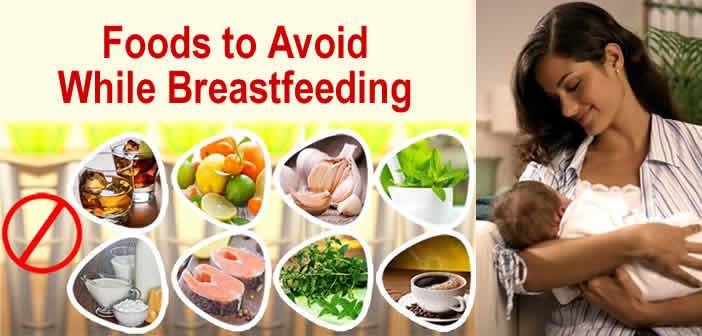 nine0022
nine0022 - Find out more about nutrition, a balanced diet and physical activity, and most importantly, share this knowledge with your children. Ask them to tell you what is happening with their body, then they will become more aware of the issue and observe the effect of changing nutrition. And maybe they will look for information about it themselves.
Parents are able to form an optimal eating behavior in a child. But remember that eating right yourself and setting a good example for children is much more important than talking long and hard about the benefits of healthy eating. nine0003
7 foods that are undesirable for children under one year old
Of course, modern mothers know that sausages should not be given to babies, soda and cream cakes. What else can not eat children under one year old? We made a list of 7 less obvious foods.
1. Salt
Excess salt in the diet is harmful to the baby's kidneys and can lead to swelling and dehydration. Of course, a lack of salt is also not useful, but in real life, with a normal diet, it practically does not occur: salt is contained in sufficient quantities in most foods, and there is no need to add salt on purpose. And if for us, adults, baby purees and cereals without salt and sugar seem tasteless and disgusting, don’t worry, for a baby, the situation is completely different. nine0003
Of course, a lack of salt is also not useful, but in real life, with a normal diet, it practically does not occur: salt is contained in sufficient quantities in most foods, and there is no need to add salt on purpose. And if for us, adults, baby purees and cereals without salt and sugar seem tasteless and disgusting, don’t worry, for a baby, the situation is completely different. nine0003
The taste perception of young children is not yet spoiled by excessively sweet and salty foods, flavors and flavor enhancers. If your child refuses mashed broccoli, then most likely he just does not like the taste and texture of broccoli, and not at all the lack of salt.
2. Sugar
Everyone knows the dangers of excess sugar - dental problems, obesity, associated cardiovascular diseases and the risk of developing diabetes. However, it can be very difficult to refuse a cookie or candy to a child familiar with the sweet taste, and tears are usually inevitable. What to do? nine0003
The secret is simple - introduce foods with added sugar into your baby's diet as late as possible, at the earliest in the year, although it is better to wait until two years. The National Nutrition Optimization Program for Children aged 1 to 3 years recommends limiting sugar in the diet of babies 1 to 3 years of age to 25-30 grams per day, taking into account the sugar found in special baby foods, juices, yogurts, etc.
The National Nutrition Optimization Program for Children aged 1 to 3 years recommends limiting sugar in the diet of babies 1 to 3 years of age to 25-30 grams per day, taking into account the sugar found in special baby foods, juices, yogurts, etc.
3. Honey
It would seem that honey is a wonderful and healthy alternative to sugar, so why is it not recommended for babies under one year old? In fact, the reasons some. First, honey can contain spores bacteria Clostridium botulinum. The immune system of adults and children older people can easily cope with them, but in babies they can cause a deadly disease called infantile botulism. nine0003
Secondly, honey is the strongest allergen, so it is better to postpone acquaintance with it until a later age.
4. Fruit juices and drinks
American Academy of Pediatrics (AAP) released in 2017 New recommendations for adequate intake of fruit juices in infants, young children and adolescents who begin with advice to completely avoid fruit juice for feeding infants life.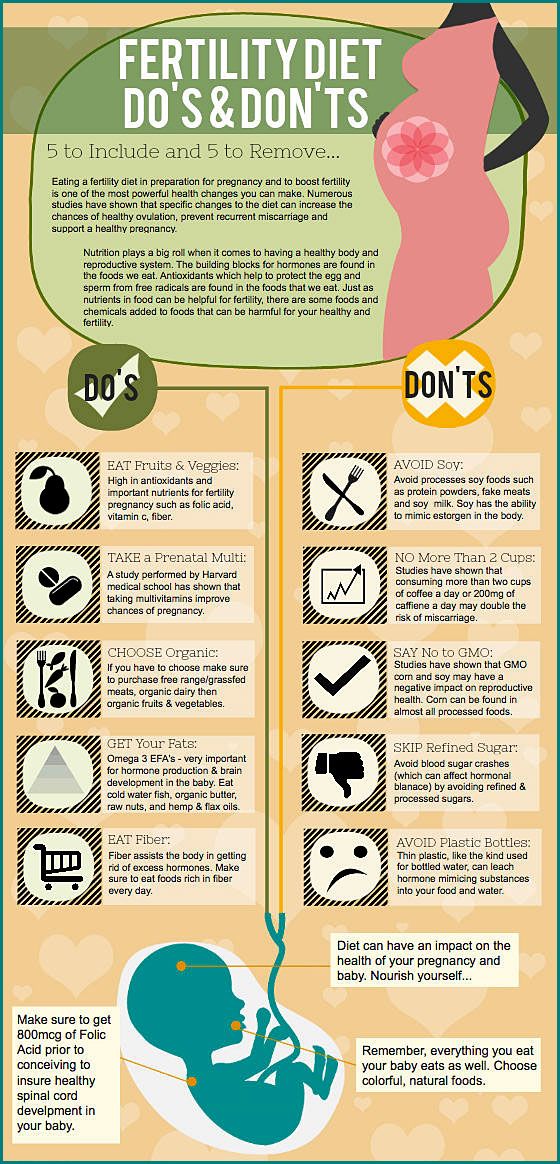 According to AAP, excessive juice consumption can lead to diarrhea, overeating or, conversely, malnutrition, as well as to occurrence of dental caries*. At the same time, babies can and should be offered Whole fruit, mashed or pureed. nine0003
According to AAP, excessive juice consumption can lead to diarrhea, overeating or, conversely, malnutrition, as well as to occurrence of dental caries*. At the same time, babies can and should be offered Whole fruit, mashed or pureed. nine0003
A various fruit drinks and nectars in addition to natural sugar from fruits often contain added sugar, which makes them perfectly unsuitable for feeding babies up to a year.
Breeding of juices and nectars with water does not completely solve the problem, since it does not reduce dental risks. If your child refuses to drink water, try compotes and fruit or herbal teas.
5. Foods that are easy to choke on
The danger of a product to children is determined by several characteristics: consistency, shape, and size. Most often babies gagging slippery, round, sticky, fibrous and hard products. nine0003
The most dangerous are all round and large enough to block the airways: lozenges, grapes, cherry tomatoes, nuts**. Not far behind in sad dangerous food rating other candies (especially sticky ones), fish bones and meat and, in fact, the meat itself ***.
Not far behind in sad dangerous food rating other candies (especially sticky ones), fish bones and meat and, in fact, the meat itself ***.
Remember that theoretically a child can choke on any food, so never leave your baby unsupervised eating.
6. Egg white
Have you ever wondered why in all complementary feeding schemes is it the yolk, not the whole egg? Nothing surprising: egg protein is one of the strongest allergens. Up to a year is better limit the baby to only the yolk, and introduce the protein a little later.
Only make sure the eggs are thoroughly cooked. Raw and half-raw eggs may contain a bacterium that causes salmonellosis, a disease deadly for young children.
7. Cow and goat milk nine0013
Surprised? Whole cow's milk is the main cause of allergies in children under one year old. In addition, it contains a large amount of lactose, milk sugar, which some babies have difficulty digesting due to the fact that their gastrointestinal tract is not yet sufficiently developed.

